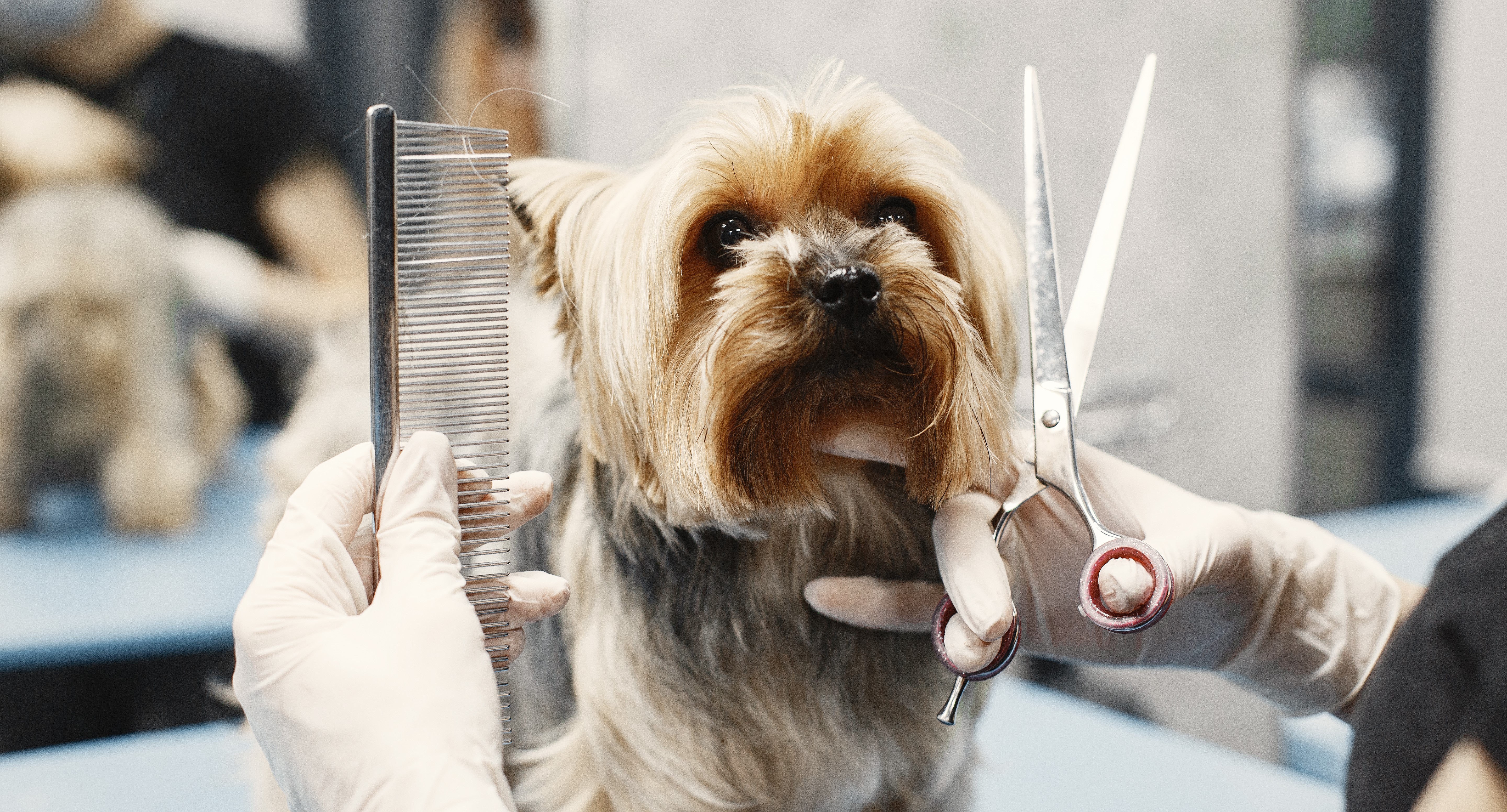Frequently Asked Questions About Dog Grooming
Dog grooming is essential for all breeds. As each pet is unique, it’s important to understand how to properly groom different types of dogs.

Regular grooming is essential to maintain your dog’s skin, coat, nails, and overall health. Grooming also allows your pet to look and feel its best. Of course, each dog is unique and requires varying levels of care. Short-haired breeds, such as Dachshunds and Boston Terriers, will generally require less extensive grooming than long-haired breeds like Maltese and Yorkshire Terriers. It’s important to understand how to properly groom your pet to ward off infection and ensure optimal health. The following frequently asked questions and answers provide insight into the principles of dog grooming.
Dog Grooming FAQ
1. When should a puppy get its first grooming?
Puppies should become accustomed to grooming early on in life if possible. This allows the dog to get used to the odd feelings, odors, and noises associated with grooming. Ideally, puppies should experience their first grooming session approximately two weeks after they receive their last set of vaccinations. Bringing your pet to an experienced groomer is also a wise choice as reputable groomers know how to handle young dogs.
2. How often should a dog be groomed?
The answer to this question can vary. As a general rule of thumb, the average dog should undergo pet grooming every six to eight weeks. However, long-haired dogs or short-hair breeds that spend a lot of time outside may require more frequent grooming sessions.
3. What does professional dog grooming include?
If you plan to take your dog to a professional groomer, you may be wondering what this service includes. While each groomer is different in the specific services they offer, basic grooming services include brushing, bathing, and drying the dog’s coat. It may also include trimming and styling the dog’s coat, removing mats, cleaning the dog’s ears, and clipping his nails.
4. What supplies are needed for dog grooming?
If you plan to groom your dog at home, you’ll need a few essential supplies. For short-haired breeds, a basic dog brush or comb is adequate. Longer-haired breeds may require dog hair clippers, scissors, and a deshedding tool. Dog shampoo and conditioner, clean towels, cotton balls for cleaning your dog’s ears, and nail trimmers are also required.
5. How can I make grooming easier for my pet?
While some dogs don’t mind being groomed, others may become anxious or even aggressive due to fear. It’s important to be patient with dogs that show signs of discomfort during grooming sessions. To make the process easier on your pet, start with brief sessions and gradually increase the length over time. Try using treats or toys during the session to distract your pet and make it a more positive experience.
6. How often do dogs need their nails trimmed?
Many pet owners overlook the importance of regular nail trims. When nails become overgrown, it can be painful for your pet to walk. Long nails can also impact your dog’s posture and gait and can contribute to inflammation in the joints. In time, long nails can split or curl into the dog’s skin or paw pads, resulting in pain and infection. To prevent these issues, aim to trim your dog’s nails approximately every three to four weeks. Dogs that spend a lot of time walking on pavement may require less frequent nail trims as their nails will wear down naturally.
7. Can mats in dog fur be removed?
Dogs with longer coats often experience matting in their hair. Extremely matted or tangled fur can be difficult to resolve and can cause your dog stress and possible injury. Depending on the severity of the matting, they may need to be removed with clippers which involves trimming the coat very close to the skin. Smaller mats or tangles can often be remedied with the right dematting tools and patience.
8. Do dogs require special shampoo?
You may be tempted to use your own shampoo on your pet, but this isn’t a good idea. Human shampoos are often too harsh for dogs and can strip away the natural oils in their coat, leaving the skin dry and vulnerable to irritation. Dog shampoo is gentler and is specifically designed to be used on dogs’ skin and coat. There are also different types of dog shampoos on the market that can help various ailments, such as itchy skin. Medicated shampoos, oatmeal shampoos, and dog flea shampoos are common options.
9. Why is pet grooming important?
Pet grooming is important for more than just aesthetics alone. Proper grooming can help combat shedding, prevent bacteria from spreading through your home, and help keep long-haired dogs cool and comfortable. Grooming also promotes healthy nails, skin, and teeth, and can serve as a way for pet owners to identify lumps, rashes, dental problems, or other health issues a dog may be experiencing.
10. How long does professional dog grooming take?
If you bring your pet to a professional groomer, you should know that the grooming process can be quite lengthy. Professional grooming sessions often range from two to six hours on average, with larger dogs or dogs with long hair requiring more time than short-haired breeds. It’s important not to rush the grooming process to avoid risking injury to your pet.
Pet grooming plays a critical role in keeping your pet healthy and is an effective way to detect certain health problems early on. If possible, leave this job up to the professionals as reputable groomers have extensive experience safely grooming pets of all sizes and temperaments.
Ready to start saving money on pet wellness care?
Then take a look at Mint Wellness, the pet wellness plan that provides fast reimbursement on routine pet care. Save on vaccinations, wellness exams, preventatives, dental, and more!
Learn More


